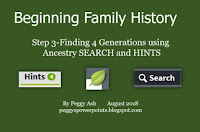Digital management is a hot topic in many fields but because of the uniqueness of everyone's personal genealogy and style, it can become a bit complex in the subject of family history. There are many classes, books, webinars, etc. on the subject in relation to genealogy. I have watched, studied, and read many. What I have discovered is that there is no perfect system. Some I like better than others and you will too. What I have included in this PowerPoint are examples of some of the better methods and ideas. You can choose what suits you. Metadata is introduced with various free methods of adding metadata to your image files. This allows you to add source citations to your images that stick with them wherever they go, as well as a variety of other options. Hopefully, you will be able to make some more informed decisions in the future. Family History and Digital Management PowerPoint PDF Family History and Digital Management PowerPoint PDF-HANDOUT VERSION Batc



















